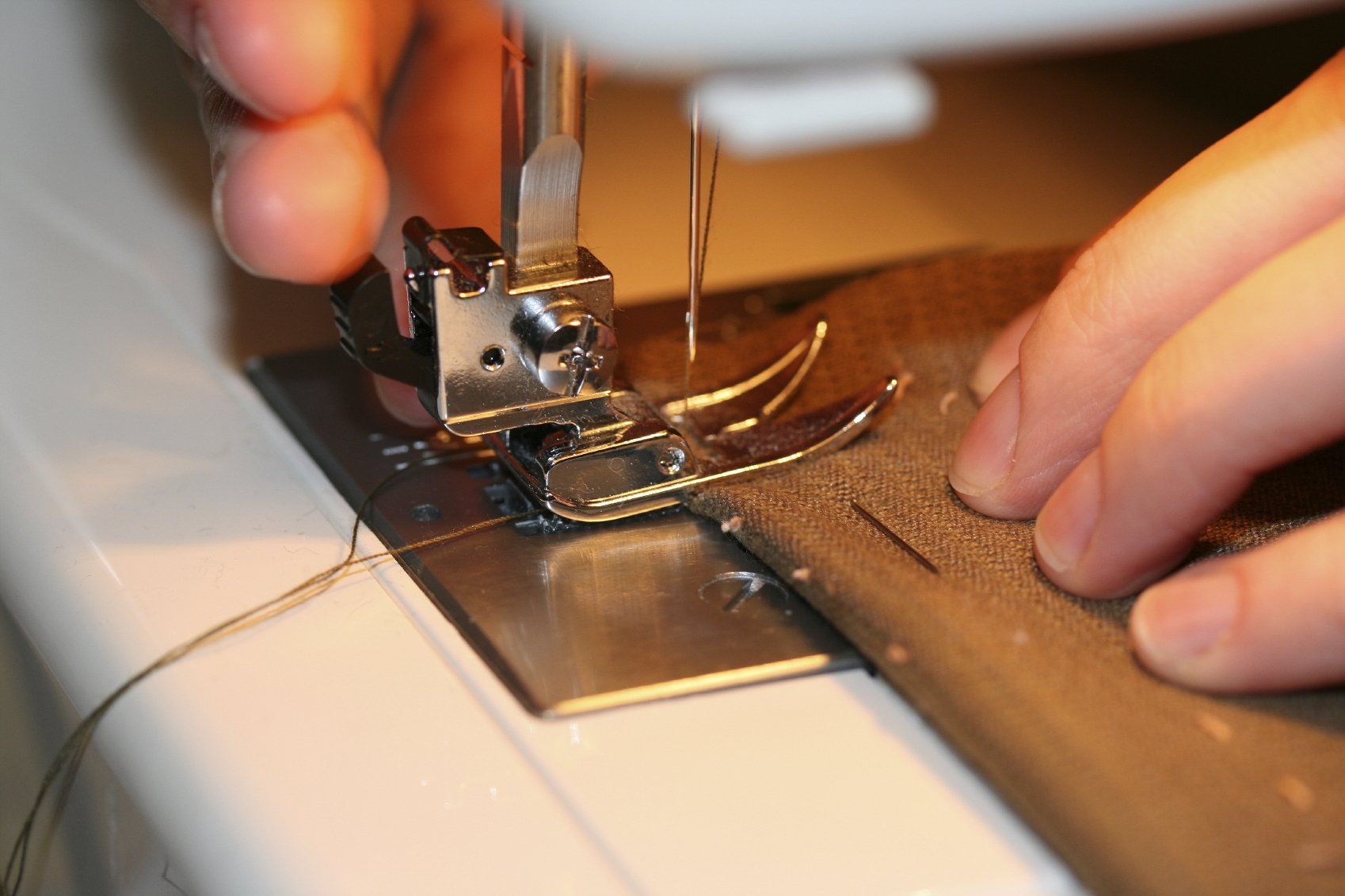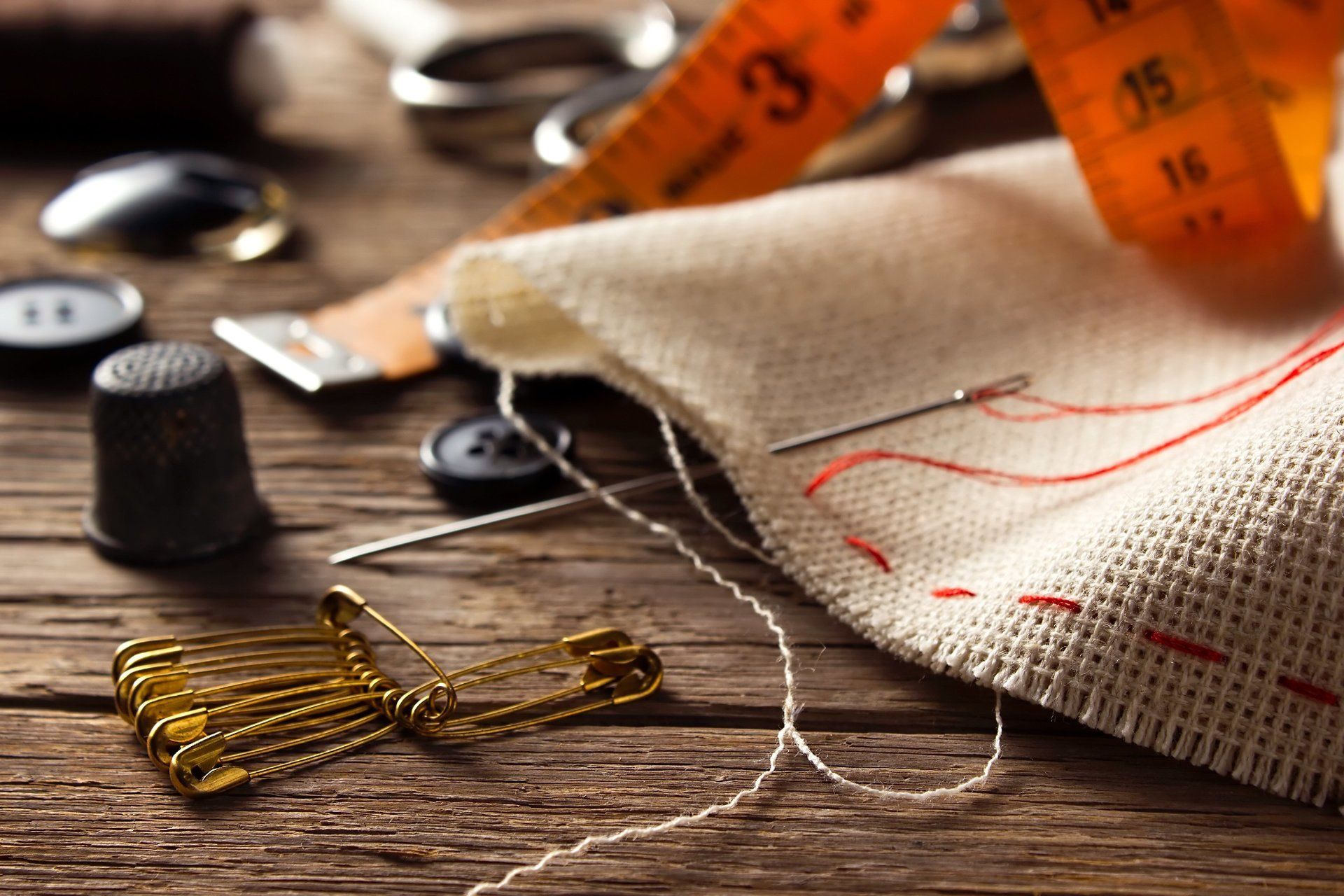By Jennifer Edwards of Love Haslemere Hate Waste
There was a time, not long ago, when making and mending your own clothing was something almost everyone did out of necessity. But with the rise of fast fashion, such practices became seen as old fashioned or even a sign of poverty.
With the environmental and socio-political impacts of fast fashion becoming more and more clear, many people are taking a more mindful approach to choosing and caring for the clothes they wear, and mending is fast becoming more common place once again.
At the Love Haslemere Hate Waste Repair Cafe, we love repairing and refashioning worn clothes, and want to inspire others to love and care for their own wardrobes too.
Here are 3 reasons why everyone should consider learning how to mend their own clothes:
1. The impact on the environment.
It might surprise some people to learn that the fashion industry is one of the biggest polluters in the world not far behind the fossil fuel industry.
From the production of the textiles and dyes, to the over-production of clothing which means that a huge portion of garments made end up never being sold and instead go straight to landfill, the fashion industry has a huge carbon footprint. There is no magic bullet solution that will solve the problem anytime soon.
But one way we can all do our bit is to minimise demand and the amount of clothing in circulation by buying less of it - by properly caring for and repairing our existing clothes we can make them last longer, and save a ton of money in the process!
2. The human cost
Mending your own clothes can help us be mindful of the true cost of the clothing that we buy.
Most of the cheap clothing produced in the world comes from factories in developing countries where workers (many of them children) are forced to work in dangerous conditions for less than a living wage. As a general rule, the cheaper the garment, the more likely that someone was exploited in order to make it that cheap.
Mending your clothing can give you an idea of the work it takes to produce them and an insight into what you think your clothing should be worth. The more love and care you put into a garment, the less likely you are to throw it out and when that garment is beyond repair, you will likely put more thought into what you buy to replace it.
3. Self-care and creativity
Many of us live very busy lives, and in the wake of COVID many have recognised the need to slow down a bit and take some time for ourselves.
Because it doesn’t require very much concentration, mending is something that can be done while relaxing in front of the television, chatting to a loved one or even as a way to calm your mind as a kind of meditation - if you’re the sort of person who finds it difficult to sit still and meditate in the conventional way, then mending can be a great alternative.
But mending can also be a way to express yourself creatively (another form of self-care) without having to commit to a large, time-consuming project, and can also be a fun way to customise your clothes and show off your personal style.
Visible mending is the concept of intentionally highlighting a mend through use of colourful patches or contrasting thread and sashiko embroidery, a Japanese method of using embroidery to patch holes and reinforce fabric, can also be used to add embellishments to your clothing and make them more unique - check out Pinterest or Instagram for loads of inspiration and tutorials!
If you like the idea of repairing clothes, but don’t feel quite confident in doing it yourself yet, drop us a line at the Repair Cafe and we would be more than happy to help.
But for those of you who want to get stuck in, our ultimate goal is to give people the skills and confidence to repair their own clothes as much as possible so we hope to start running practical workshops in the near future: watch this space!
How to mend your clothes...
In the meantime, here is a little tutorial on how to mend a hole using a patch. It’s incredibly useful for spots that tend to get worn very quickly like the elbows of shirts or the knee and crotch areas of trousers.
You will need:
• A needle - if mending a heavier fabric like denim, use a bigger needle to save aches in your hands
• Safety pins
• Thread - embroidery or sashiko thread is easier to use than machine sewing thread as it doesn’t tangle as easily so just be extra careful if that’s all you have. Use a colour that’s as similar to your garment as possible for a more subtle mend or use a contrasting one to highlight and make a feature of it - you can have a bit of fun here!
• A patch - you can use either some scrap fabric or you can buy patches from the haberdashers. If using scrap, try to use something that’s the same fabric or of a similar weight as whatever you’re mending (in this example I’ve used scrap fabric from an old pair of jeans that were beyond repair to mend this other worn pair of jeans).
Step 1. Tidy up the hole by snipping any loose threads or fuzzy bits and cut a patch that completely covers it (if the area around the hole is particularly worn, you can make the patch bigger to reinforce the fabric).
Step 2. Use safety pins to secure the patch in place on the underside of the garment.
Step 3. Stitch around the hole securing the patch as you go. This stops the hole from fraying and getting any bigger.
Step 4. Make small stitches over any worn parts of the fabric around the hole to further secure the patch under the fabric. This reinforces the fabric and prevents any future holes (it’s also a good idea to do this on any parts that are really worn before a hole actually appears as it’s a much faster job). You don’t need to worry about making them neat or go any particular way if the thread matches the fabric or it’s in a place no-one will really see but more stitches = stronger fabric.
You can get really creative with this step by experimenting with the direction of the stitches or embroidering flowers.
Done!
This is just one of many ways to repair a hole so experiment with different methods and find one that suits you best - Happy mending!
Related Articles

LATEST BLOGS...

BRINGING THE COMMUNITY TOGETHER THROUGH THE STRENGTH AND POWER OF VOLUNTEERING
Community Interest Company (number 13424641)
Email us on
info@thisishaslemere.co.uk
© All Rights Reserved |
Privacy Policy
Keep up to date...
Newsletter Sign Up
Thank you for signing up to the newsletter.










